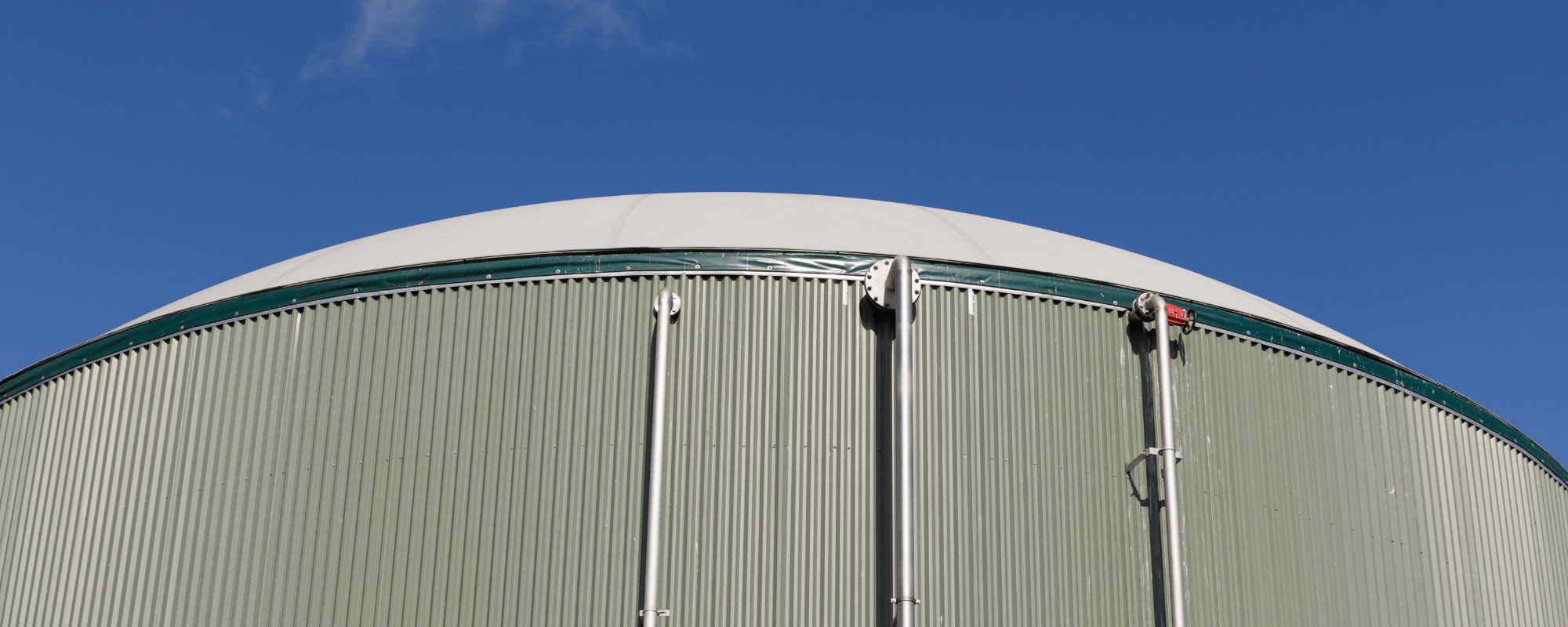Renewable gas
Renewable gases are made from renewable energy sources and don’t produce additional emissions when used. 90% our gas network (and most new subdivisions) are able to distribute biomethane (biogas) or renewable gas blends, which means you still have a choice of how you energise your home and the benefits of multiple energy sources now and into the future.
- Biogas is produced from decomposing organic waste such as fruits and vegetables. Once biogas is cleaned (carbon dioxide, hydrogen sulphide and water are removed) it becomes biomethane (also known as renewable natural gas) and is what can be used on our gas network.
- Renewable hydrogen is made using renewable electricity to separate hydrogen from water.
Biogas
Biogas isn’t a new concept. The world’s first biogas digester was used in Bombay, India in 1859 and six years later biogas was used in Exeter, England to power streetlamps. Since then there have many uses for it around the world.
Biomethane (cleaned biogas) is almost chemically identical to natural gas. This means biomethane can be used interchangeably with natural gas and used the same way, so you can keep enjoying the benefits of gas cooking, heating and hot water for years to come without additional emissions entering the atmosphere.
More information about how our parent business, Powerco, is working towards biomethane and how businesses can get involved can be found on its website.
Has biogas been used before in Aotearoa New Zealand?
With biogas already being developed and trialled here in Aotearoa New Zealand and already used in countries around the world, you can continue to enjoy the benefits of gas in your life as we move to tomorrow’s gas energy.
How is biogas created?
Biogas is created naturally and emitted into the environment when organic materials such as food waste, landfills and wastewater break down. Biogas is captured in anaerobic digestors and then carbon dioxide, hydrogen sulphide and water are removed which creates biomethane (also known as renewable natural gas) – a gas that can be used to energise our homes.
We’re excited by the potential of biogas to take New Zealand’s organic waste from areas such as landfills, agriculture, and manufacturing to create a carbon neutral gas (biomethane).
Capturing and using biogas has a range of environmental benefits;
- Reduces New Zealand’s emissions from organic waste and the use of natural gas.
- Reduces the amount of waste going to landfill.
- Creates a sustainable alternative to natural gas.
- Supports the production of natural fertilisers which can reduce reliance on synthetic fertilisers.
How much organic waste is needed to produce biogas for residential use in Aotearoa?
Our parent business Powerco co-commissioned the Vision for biogas in Aotearoa New Zealand report which shows that Aotearoa currently produces around 4.9PJ of biogas annually – a lot of this is currently released into the atmosphere with no beneficial use. Recent studies show the Aotearoa has the potential to produce up to 23.4PJ of biogas. So what does this all mean? With the right partners, there is the potential to create and use biogas to energise all our residential customers with the same amount of natural gas that is currently being used by homes on Powerco’s gas network.
Is renewable gas safe?
Like other gases, biomethane is flammable, which is a key reason why it can provide energy, but it also means we need to treat it with respect like we do with our current natural gas and electricity networks.
Biogas is a popular energy source around the world and there is plenty of knowledge and expertise on how to capture and use biogas as safely as natural gas.
Renewable hydrogen
There’s a lot of excitement about the potential of renewable hydrogen as a future gas. Renewable hydrogen is created using renewable electricity and doesn’t contain any carbon when it burns, the only emission it creates is water particles.Just like biogas it can be used much like natural gas today and blends of up to 10% can be used in our current network. Unlike biogas it’s chemically different to natural gas and more investment is needed in New Zealand’s gas infrastructure before 100% hydrogen could be used in the network.
Renewable hydrogen can be converted to electricity to power electric cars. In Aotearoa renewable hydrogen is being trialled for powering public transport and commercial trucks.
